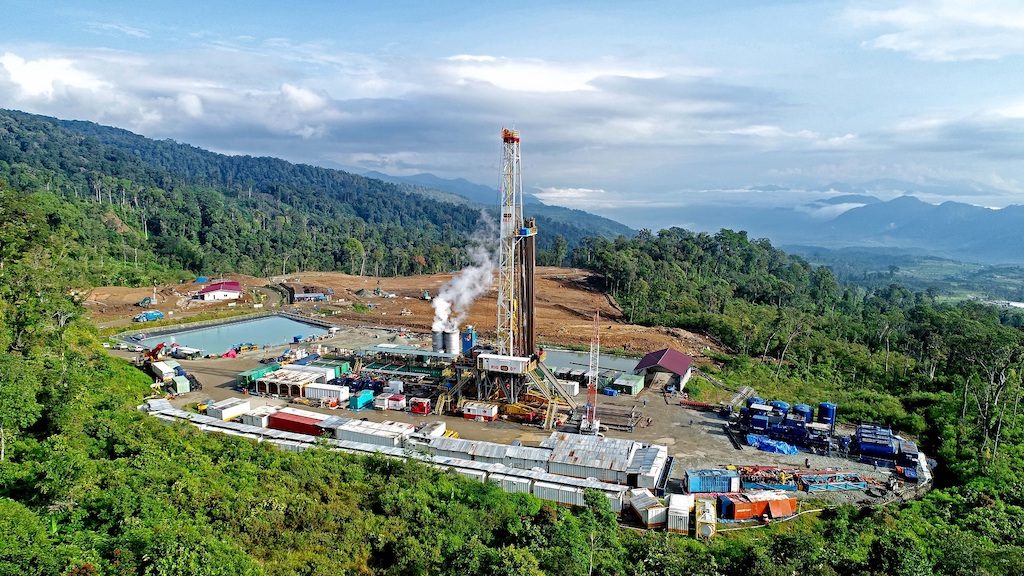Careful optimism on expected increase in demand for drilling in the geothermal sector
Based on reporting on expected geothermal development and demand for drilling by Rystad Energy, we did our own evaluation expecting between 124 and 160 wells needing to be drilled on an annual basis in line with ongoing development plans.
Coming across a research note released by Rystad Energy, a Norway-headquartered research company, we started to cover it like we normally do here on ThinkGeoEnergy. Yet going through the note, we are more and more sceptical about its content.
The report estimates that the geothermal energy sector could see an investment of up to $25 billion in the next five years. The company basis this on its estimates of an increase in geothermal power generation from 16,000 MW at the end of 2020 to 24,000 MW in 2025.
How realistic this is given the circumstances is though another question. ThinkGeoEnergy reported an installed geothermal power generation capacity of 15,406 at the end of 2019 with an installed capacity of today (Oct. 2020) is 15,427 MW. Under our estimates capacity increase for the 2020-2025 period is around 4,200 MW with projects currently under construction or relatively advanced in project development.
It is though interesting to see how Rystad looks at an expected increase in drilling activities. While seemingly focused on the power sector only, these numbers – even likely on the optimistic side – could be realistic when taking drilling for heating projects into account as well.
Rystad Energy describes the growth as a likely “relief to oil and gas suppliers exposed to well-related services as the number of geothermal wells drilled globally will climb from 223 in 2019 to 380 in 2025.” Yet, how much this really is a relief given a drop in drilling activities for oil and gas of completely different proportions will have to be seen.
The company estimates that in the past ten years (2010-2020) around $40 billion has been invested into new geothermal energy development. In line with the estimates of ThinkGeoEnergy, the top 10 countries in terms of installed geothermal power generation capacity represent a vast majority. Rystad Energy estimates 90%, our estimates put it at around 93% of capacity, while a total of 29 countries today generate electricity with geothermal energy. This number could increase to 57 countries in the coming years taking into account current development and about 80 countries in total looking at development plans globally.
Rystad Energy describes a drilling demand of 20 additional wells per year needed for Germany alone, again not quite sure and that hopeful that this is in fact true. Yet including drilling for heating projects this could be more realistic.
In terms of mentioned top geothermal power operators, Rystad Energy names Calpine and Ormat. Our data shows the following top 5 geothermal operators today: EDC (Philippines), Ormat (worldwide), CFE (Mexico), Enel, and Star Energy Geothermal, in that order. Chevron – the only oil firm that was a geothermal operator – sold its plants in the Philippines and Indonesia in 2017.
The estimates by Rystad on wells drilled and expected to be drilled are quite optimistic and – so our opinion – a bit questionable. Describing that 30 to 80 geothermal projects having been commissioned per year (which would be 150 to 400 plants), with only around 2,300 MW having been developed in the 2015 to 2020 period is clearly not correct.
In a 2013 report on the “Success of Geothermal Wells” by IFC with input from GeothermEx, the authors describe the most frequent gross capacity of wells to be 3 MW with an average capacity of 7.3 MW (this though skewed by several very high capacity wells), so GeothermEx sets the average capacity at 6.8 MW.
So assuming that things have not changed dramatically, we can estimate that in the 2015 to 2020 period and a capacity of 2, 300 MW, the number of wells lies in the range of 340 to 460 wells within 5 years, which translates to roughly 68 to 90 wells per year. Again this is for power projects only.
Clearly one would have to do a much more thorough analysis of the market, drilling done to provide a better evaluation.
But if we were to take into account our estimates of geothermal power development in the coming 5 years and an estimated 4,200 MW to be added, we could see around 620 wells being drilled for geothermal power projects in the next 5 years, so roughly 124 wells per year.
Again, we point that we briefly put our estimates and commentary to evaluate the reporting by Rystad Energy and are not claiming to be absolutely correct as we only did a quick evaluation of the data presented. It though shows that our industry is in a dire need to do more general research that helps us and the industry to portrait a realistic outlook not only on development, but also drilling – and this not only for the power generation sector of geothermal, but also direct use, e.g. for district heating. If you have some thoughts on this and would like to evaluate with us what would be required to conduct more research along those lines, please drop us me a line at alex (at) thinkgeoenergy.com.
Source: Press release by Rystad Energy


















